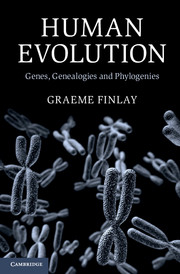4 - The origins of new genes
Published online by Cambridge University Press: 05 June 2014
Summary
Progressively accumulating mutations have mapped out the route of human evolution (Chapter 3). Genes have been disabled at a measurable rate. Genes or fragments thereof have been ‘copied and pasted’ haphazardly around the genome. All this may leave us with the impression that the genome that we have inherited is heading towards decrepitude. But if humanity is the terminus of such a messy process of genomic shuffling, how is it that the species shows capacities such as manual dexterity and mental versatility that are unprecedented in the biosphere? The advent of these new powers implies the elaboration of genetic complexity.
ERVs and TEs have added vast amounts of raw material to primate genomes. Some of these units of genetic flotsam have been transformed into new protein-coding genes. Thousands of these have been exapted as regulatory sequences that control gene activity. Our genomes have been rewired by their semi-autonomous denizens. But could new genes also arise through cumulative mutational changes? A coding sequence would need to arise – and that seems unlikely enough. Such a nascent gene would require concomitant regulatory sequences that would assemble the transcription factors needed to transcribe it – in the appropriate cell type, and at the right time. But that coding sequence would also need to encode a protein with functional domains, able to connect with established proteins and integrate into elaborate networks.
- Type
- Chapter
- Information
- Human EvolutionGenes, Genealogies and Phylogenies, pp. 194 - 264Publisher: Cambridge University PressPrint publication year: 2013



